Original Post here: https://80.lv/articles/art-in-video-games-what-s-the-purpose/
What hides behind pictures on the walls in different games: easter eggs, side stories, a door to another world? Let’s see.
How often do you encounter little pretty pictures on the walls when playing games? Do you even pay attention to them? If you are a type of a gamer who likes to rush through the levels then probably not, – and that’s ok! In our team, however, there’re some real nerdy detectives who enjoy examining every tiniest detail and spending hours in a location that normally takes 30-40 minutes to play through. So, what have we dug up?
Decoration
Let’s start with the simplest discovery: however obvious or boring it might be, sometimes pictures on the walls don’t mean anything in particular. That might drive conspiracy fans crazy, but hey, not everything in a game should be an easter egg, okay? Those pictures on the wall might have been put there just for the sake of the setting to add the interior credibility and detail. Is a player going through a gallery? Well, galleries MUST have some pictures on the walls, even after a large art heist. Are you making a kids’ room? Children like to draw! Is it an office of a psychotherapist? Private doctors usually decorate their offices with landscapes or other peaceful art to create a relaxing atmosphere for the clients. You can’t avoid those details if you want your location dressing to support the story of the game.
Even in F.E.A.R. 2: Project Origin, there’s a place for some cuteness. Craft projects on the walls of the grim hospital mark the previous presence of children:


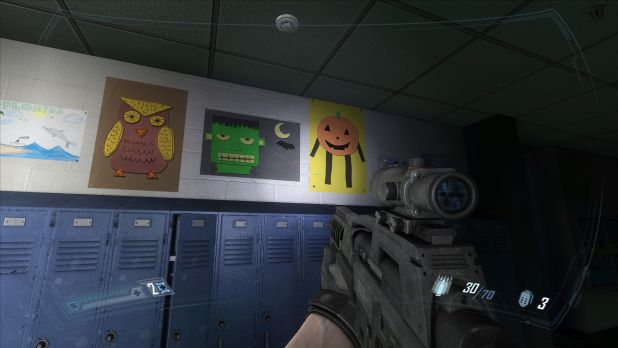

Feelings
Now, on to more specific cases. Some art not only works as a background but also adds to certain feelings that the players are supposed to experience during the game. Cute childish drawings warm your heart, sublime royal portraiture adds to the grandeur, horrific illustrations bring uneasiness. The latter case is widely used in horror games – Amnesia, Layers of Fear, Silent Hill. In Amnesia Dark Descend, for example, the Portrait of Alexander of Brennenburg, a sadistic owner of the castle, changes depending on your level of sanity and takes a dreadful distorted form if the level drops. The same happens to other pictures.
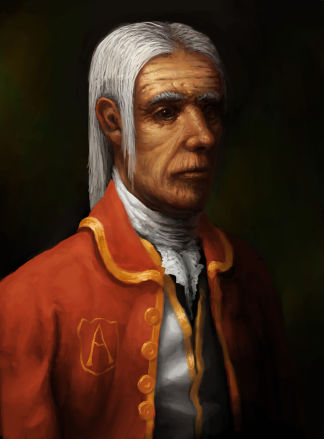





In Amnesia: A Machine for Pigs, the walls of the mansion are decorated with unsettling art, too. Take a look:
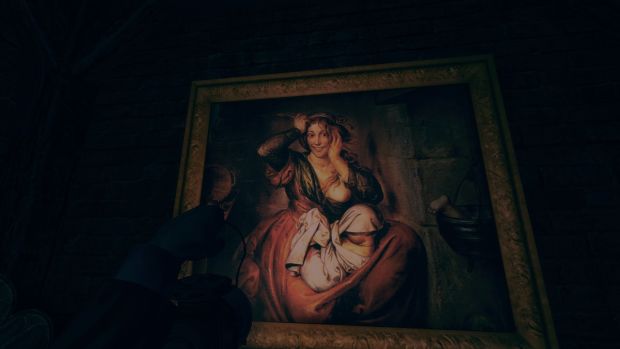
Hunger, insanity, crime by Antoine Joseph Wiertz
Paintings in Nier also slightly change when you pass by them:




These grim paintings can be found in the Silent Hill series:
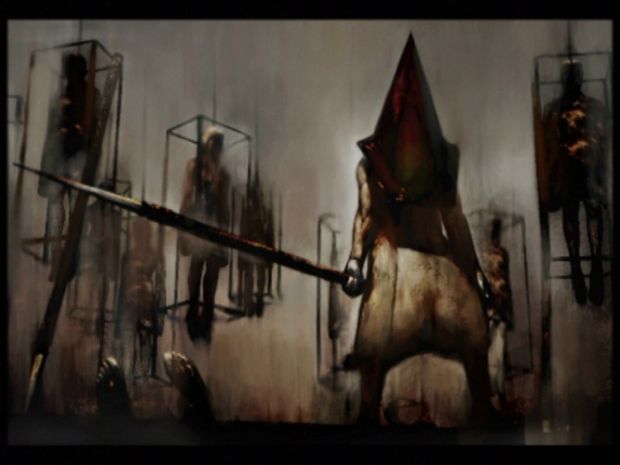





What’s interesting, one of the Silent Hill 3 paintings called “Flame Purifies All” has a special role. It must be interpreted literally and burned in order to follow the plot of the game. That’s already a gameplay element – and we’ll talk about it later.
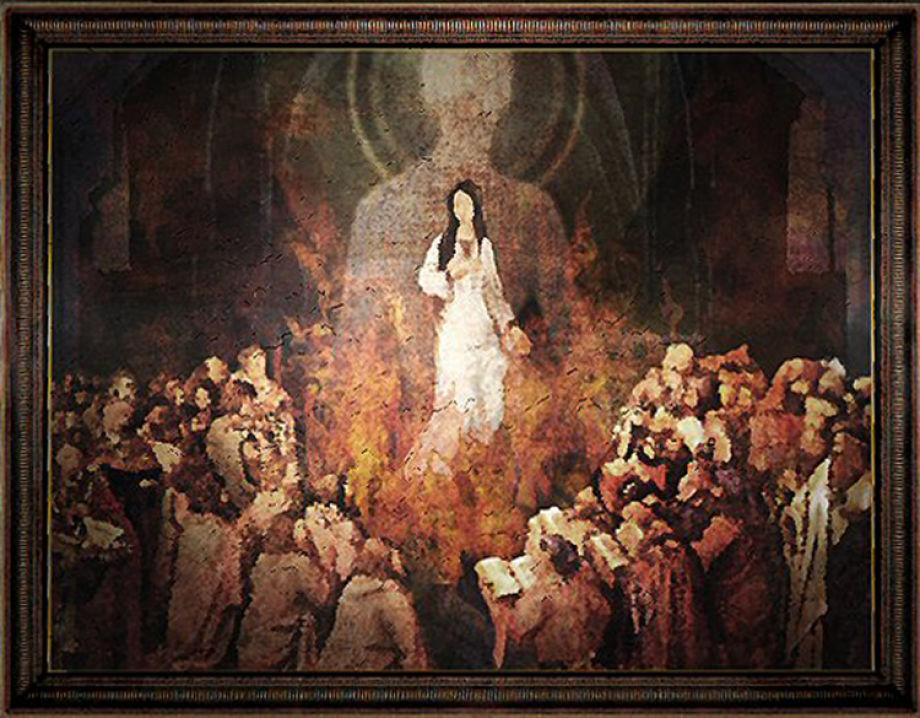

Side Story
Pay closer attention to the walls and sometimes you will find out more about the game world or its characters. If every game offered you a 50-pages booklet that described the history of its universe, that would be probably quite boring, at least for some players. Why spending time and effort on writing a story guide if your audience is not going to read it? After all, the games are meant to be played, not read about. It’d be a much better idea to inject the history part by part – through tape records, notes, letters, side quests, and, of course, pictures. Surely, such elements are usually unnecessary in terms of gameplay – the ending will not change if you haven’t found a letter or two, – but they make the overall gaming experience immersive and full.
Portal 2 is a great example of that: the drawings on the wall left by Doug Rattmann gradually tell the player about his life and the events that happened at Aperture Science. Pure storytelling in action.




The graffiti below depicts the development of GLaDOS, GLaDOS killing the staff, and Chell destructing GLaDOS:
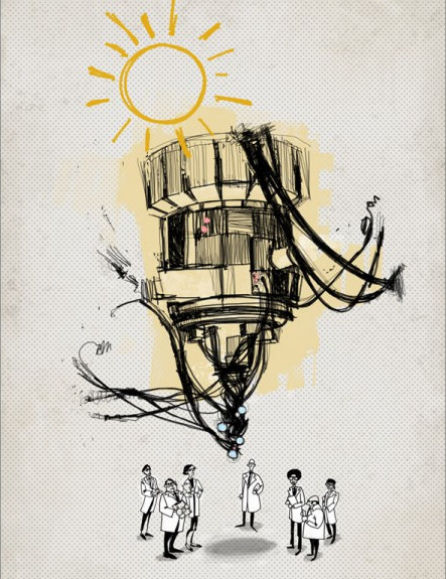







Gameplay
If you miss this type of artwork, your walkthrough might be seriously compromised. Different pictures can be part of a puzzle containing a code to a secret door, a hint at what will happen next to get you prepared, or a direct goal of your quest. Remember the painting in SIlent Hill 3? In The Legend of Zelda: A Link Between Worlds, for example, Link has to find and rescue Zelda and descendants of the Seven Sages trapped in paintings by Yuga, an evil sorcerer. Turning into a painting is also one of the game mechanics which helps Link solve various puzzles.






In Men of Medan, marine artworks trigger some visions that warn the player about possible futures which may or may not occur depending on the choices made.


In Castlevania: Portrait of Ruin, paintings found in the castle are used as portals to different locations. The same can be found in Super Mario 64 and Dark Souls where the Painted World of Ariamis is hidden behind a painting in a chapel.








Paintings are also a perfect cover for bonus items and secrets. For example, in Wolfenstein: The Old Blood, you can find two secret items in a room behind the portrait of King Otto in the library (though it will require a key which can also be found in the library under another painting).


What lesson have we learned? Do your homework and look at the walls!
Bonus
Let’s look at some other games where we can find paintings or reference to works of art.
If you played Assassin’s Creed 2, you probably know that there’s a possibility to visit art merchants and purchase famous paintings including works by Leonardo da Vinci, Sandro Botticelli, Titian, and others. The stock is finite but quite large. Your collection can be then viewed in Villa Auditore with little notes about each painting.




You can also decorate your houses in Sims and Minecraft. The latter features paintings by Kristoffer Zetterstrand who adapted different images and classic paintings to the pixelated style of the game. Some of them refer to other games like Grim Fandango.








Connoisseurs of Impressionism can find something familiar in BioShock Infinite when walking along the streets in Paris. Not only can you meet a bunch of sidewalk artists there, but there’s also something peculiar about common folk sitting in cafes. Some of the scenes, if examined closely, can strongly remind of works by Édouard Manet and Paul Cézanne. To be honest, many Paris settings in Bioshock look like they’ve stepped off the canvas of a talented impressionist, however, these scenes literally did.






Some works by famous Romantic painters find their reflection in another game, Bloodborne. The sinister and sublime world of Bloodborne feels to be heavily inspired by the eerie art of Caspar David Friedrich and Zdzisław Beksiński. There’s an insightful kotaku article by Andreas Inderwildi that provides an in-depth analysis of this topic. Check it out here.












